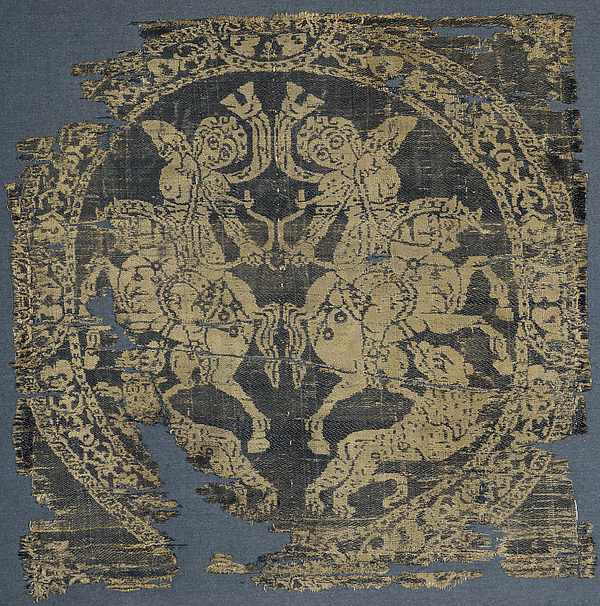I'm pretty sure most people are going to be going with the early Byzantine look from the 6th century mosaics of Justinian and Theodora. I love the sumptuousness of the mosaics, but the middle Byzantine look I've fallen in love with (10th-11th century) has something that they don't-- an incredible skyscraping hat. Don't get me wrong, the Empress has amazing hair with pearls and a crown and a whole lot going on. Not to mention the superhumeral of doom. But the noblewoman's hat is closer to the head with a large roll at the base, and superhumerals seem to be limited to Imperial dress until about the 10th century when they begin to be used by other members of the aristocracy (and become the Rus ozherel'e.) Pushing forward lets me put a giant fan on my head kinda sorta like my favorite Russian hats, gives me a great fabric belt, and adds a killer collar. Not to mention the nifty angelwing sleeves.
I'm using this miniature from a Psalter, Vatican Greek Manuscript 752 as my design inspiration. It was copied in 1059. That's an important date because it is really close to 1054 when the Western and Eastern branches of the Christian church decided to excommunicate one another and go play in their own sandboxes. Art always flourishes in times of unrest and you can see the turning from old Roman forms and toward more Eastern influences in the changes of fashion. This miniature is sometimes listed as "dancing girls" but the clothing worn is very specifically noble. The stripes on the hats indicate rank. The large amounts of gold decorative work is another clue that these are not lower class women. To see what a dancing girl would more likely looked like (short sleeves with no long sleeved tunica underneath, uncovered head, and with much less opulence and gold) have a look at this miniature from an 11th century manuscript of Oppian's poem on hunting Cynegetica. It is from manuscript Z 479 held in the Biblioteca Nazionale Marciana in Venice. Timothy Dawson has a reconstruction on his website Levantia.
You can clearly see patterns depicting the expensive silks popular among the nobles and onlt available in small amounts, if at all, in other countries. Byzantium used these silks as a diplomatic tool, letting them out in bits and pieces. If you are at all interested in this, there's a good discussion in Angeliki Laiou's book The Economic History of Byzantium: From the seventh through the fifteenth century. Did I mention I did waaaaay too much research on Byzantine silk as I was examining Russian textiles and embroidery motifs. Yeah. Um. Anyway, although I would have really liked to have purchased something like Sartor's silk damask reproduction of the medallion patterns typical for Byzantine silks, the price tag just wasn't something I could manage right now. But drooling is fun. I love this Amazon pattern in the Met.
 |
| Amazon silk roundel from the Met |
I'm actually sort of thinking about printing something very like the Amazons on the mantle I will be making for this outfit. We'll see, I guess. In the meantime, I went hunting for the costumer's solution for fabric when you want inexpensive silk with beading and embroidery: antique saris. I spent a couple of days searching through what was available on Ebay and trying to figure out what color I wanted. I love turquoise and magenta and was hoping for something with peacocks similar to what I made one of my Russian outfits from, but nothing turned up that I loved. I couldn't find anything blue that spoke to me. But then I found the most amazing green that shouted "Look at me, look at me! I'm Byzantine."
Silk-- check. Roundels-- check. Gold-- check. The roundels are floral rather than animals or figurative. but other than that I think it's pretty darn perfect, And it has some gold beads on it already. It needs more. And pearls. And possibly more pearls.
I found another sari to cut trim from and I've got white linen for the tunica underneath. I need to get felt to make the hat, figure out the mantle, and generally get the guts to cut into my sari, but I'm feeling pretty good about the project so far.


No comments:
Post a Comment